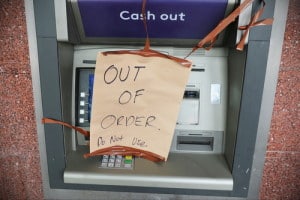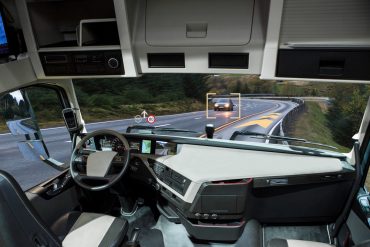
How do you remotely service ATMs?
Name of Organization: Diebold, Inc.
Industry: Technology
Location: Canton, OH USA
Business Opportunity or Challenge Encountered:
Automated teller machines are everywhere and ATM repair is a serious challenge, as machines can frequently go out of service, meaning lost revenue for the ATM operator.
Diebold, Inc. is a global leader in providing integrated self-service delivery and security systems and services, with ATMs in almost 90 countries. The vendor’s service channel accounts for more than half of its revenues. With a great deal of pressure on the financial services sector to reduce operating systems, Diebold needed to rethink its standard service-and-repair model, which was onsite.
As recounted in case study published by PTC, Diebold sought to devise a way to remotely service, in real time, its increasingly software-driven self-service ATMs while adhering to iron-clad security practices. The goal was to service ATMs and respond to issues as they occur, versus dispatching technicians to travel to the physical site to address the problem.
How This Business Opportunity or Challenge Was Met:
To enable real-time remote servicing of the ATMs in its far-flung network, Diebold adopted a remote service model for its Opteva ATMs known as OpteView. The ATMs employ PTC Axeda software to create a service approach that is connected, allowing a direct communication flow between Diebold and end-user ATMs.
“When we released our Opteva platform, we designed in the ability to remotely service and diagnose our product because our traditional service model was based 100 percent on the dispatch of parts and labor to the site whenever the ATM failed,” says Paul Mercina, director of service product management/operations planning at Diebold. “With this remote service technology, we can start diagnosing problems at the time of failure, and, in some cases, actually correct the failure without waiting for a technician to go on site, which could be within minutes.”
Opteva ATMs have built-in data-capture technology and store pertinent information about a device’s performance for access by OpteView. Diebold’s remote service support operators are directly alerted when a problem with any ATM occurs.
OpteView enables regularly scheduled data collection points. This data is compiled and reviewed periodically to enable Diebold to accurately track device performance metrics. Then, predictive rules and processes can be established to provide the customer and the manufacturer with advance notification of which components will fail and at what time.
Measurable/Quantifiable and “Soft” Benefits from This Initiative:
Diebold’s traditional service model does not begin until a customer service engineer (CSE) arrives on site. For ATM repair and servicing, Diebold can now remotely access the ATM either while the CSE is en route to the ATM or before the CSE is dispatched.
OpteView remote support operators can conduct a remote diagnostic session to provide detailed information to the CSE when needed, which reduces the onsite resolution time while increasing the probability that the CSE will remedy the issue the first time and reduce repeat site visits. Ideally, the problem can be corrected remotely, entirely eliminating the need for a CSE to visit the site.
With real-time ATM data, service staff can diagnose and begin resolving problems immediately. As a result, the level of information on the machine’s status is much more detailed and the ATM can be analyzed before a technician arrives on site. This enables Diebold to deploy technicians with precise knowledge about individual machines, increasing “first-time-fix” ratios.
With the remote diagnostic and repair capabilities of OpteView, Diebold can expand the level of its service and support offerings to include predictive maintenance, software version control, and remote monitoring and notification. So far, the PTC case study reports, about 17 percent of problems have been resolved remotely, with a 15 percent decrease in downtime. Turnaround time for problem resolution has been reduced from roughly three hours to fewer than 30 minutes when remote corrective action is successful. When a CSE must be deployed, response time is guaranteed, in accordance with the customer’s service contract.
(Source: PTC)





























